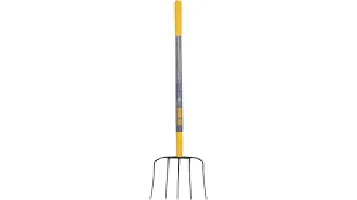The Timeless Charm and Versatility of Wooden Signs
Wooden signs are timeless, versatile decor pieces that add a rustic charm to any space. Crafted from various types of wood, these signs can be customized with engravings, paint, or carvings to convey messages, quotes, or artistic designs. Their natural grain and texture offer a unique, organic aesthetic that blends well with both indoor and outdoor environments. Ideal for personalizing homes, businesses, or events, wooden signs can serve functional purposes, such as guiding guests, or simply enhance the ambiance with inspirational words or whimsical art. Durable and eco-friendly, they are available in a range of sizes and finishes, catering to diverse tastes and styles. Whether hanging in a cozy kitchen or marking a garden path, wooden signs bring warmth and personality to any setting.

In a world increasingly dominated by digital displays and neon lights, the rustic allure of wooden signs continues to captivate hearts and minds. These handcrafted pieces of art are more than just functional; they imbue spaces with character, warmth, and a touch of nostalgia. Whether used in homes, businesses, or public spaces, wooden signs have an undeniable charm that stands the test of time. This review delves into the many facets of wooden signs, exploring their history, craftsmanship, aesthetic appeal, and practical applications.
History and Evolution
Wooden signs have a rich history that dates back centuries. Long before the advent of modern advertising, artisans used wood to create signs that communicated messages, directions, and even laws. In medieval Europe, wooden signs were commonly used by inns, taverns, and shops to display their names and services. The signs often featured intricate carvings and painted designs, showcasing the skill and creativity of the craftsmen.
Over time, the use of wooden signs spread across the globe, evolving in style and function. In colonial America, for example, wooden signs became a staple in towns and cities, serving as essential tools for both commerce and communication. Today, while the materials and techniques may have evolved, the essence of wooden signs remains largely unchanged. They continue to be cherished for their durability, versatility, and timeless appeal.
Craftsmanship
The creation of wooden signs is an art form that requires a keen eye for detail and a steady hand. The process begins with the selection of the wood. Different types of wood, such as oak, pine, cedar, and mahogany, offer varying degrees of hardness, grain patterns, and natural colors. The choice of wood can significantly impact the final appearance and longevity of the sign.
Once the wood is selected, it is cut to the desired shape and size. This step is followed by sanding to achieve a smooth surface, ready for carving or painting. Hand-carved wooden signs are particularly prized for their intricate designs and personalized touch. Skilled artisans use chisels and gouges to carve letters, images, and patterns into the wood, creating a three-dimensional effect that adds depth and texture.
For painted wooden signs, the surface is often treated with a primer to ensure the paint adheres properly. Artists then use high-quality paints to create vibrant, eye-catching designs. Weather-resistant finishes are applied to protect the sign from the elements, ensuring it remains beautiful for years to come.
Aesthetic Appeal
One of the most compelling reasons people choose wooden signs is their aesthetic appeal. The natural beauty of wood, with its unique grain patterns and warm tones, adds a touch of elegance and sophistication to any setting. Wooden signs can be customized to fit various styles, from rustic and vintage to modern and minimalist. This versatility makes them suitable for a wide range of applications, including home decor, business signage, and event displays.
In home decor, wooden signs can serve as charming focal points in living rooms, kitchens, and entryways. Inspirational quotes, family names, and seasonal greetings are popular choices for personalized wooden signs. Businesses, on the other hand, often use wooden signs to convey a sense of tradition and authenticity. Restaurants, boutiques, and bed-and-breakfasts, in particular, benefit from the inviting and warm atmosphere that wooden signs help create.
Practical Applications
Beyond their aesthetic appeal, wooden signs are also highly functional. Their durability makes them ideal for outdoor use, where they can withstand harsh weather conditions without losing their charm. This makes them a popular choice for street signs, garden markers, and trail signs in parks and nature reserves.
In commercial settings, wooden signs are often used for wayfinding and branding. They can be seen in cafes, retail stores, and offices, guiding customers and enhancing the overall ambiance. Wooden signs are also a popular choice for weddings and special events, where they add a personal and elegant touch to the decor. From welcome signs to seating charts, wooden signs can be customized to fit the theme and style of any event.
Conclusion
In conclusion, wooden signs offer a unique blend of history, craftsmanship, aesthetic appeal, and practicality. Their timeless charm and versatility make them a beloved choice for a wide range of applications. Whether you're looking to add a touch of warmth to your home, create a welcoming atmosphere for your business, or personalize a special event, wooden signs are an excellent option. The skill and artistry that go into creating these signs are evident in every piece, making them not just functional items, but also works of art that can be cherished for years to come.






